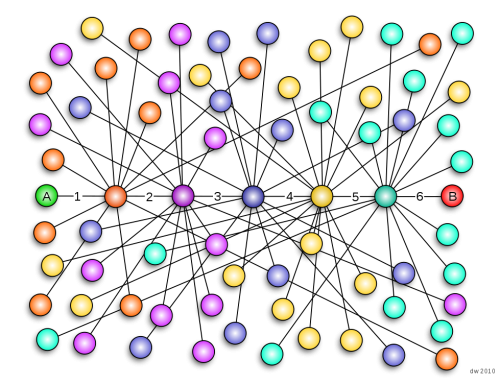I will admit to a guility pastime: I enjoy reading crime novels and watching crime shows on TV. The main reason is that I enjoy exploring the unknown and trying to solve the mystery. I think it is that part of me that also gives me joy while doing research. I never stop asking questions, with the unfortunate outcome that I occasionally leave people around me quite annoyed.
When faced with a problem in life science I tend to look at it as solving a mystery. The complexity of what is happening inside a cell and why it happens has always fascinated me. I sometimes look at it as an enclosed society where the molecules are performing their assigned roles within communication, transport, governing, waste management and so on. When I learned that journalists and police are using the Six W´s of Investigation technique to be able to get the whole story it made perfect sense to use the six W’s to understand problems within life science.
If you can answer: what, why, who, when, where and how; you will have a clear and fundamental knowledge of the whole situation. Within journalism and police investigation the Six W´s of Investigation are used to gather basic information. If all these questions are answered; you have the whole story.
Here are some suggestions of questions to ask when investigating a biological situation on a macro molecular or cell level:
What
Define the situation or the problem. What is it about? What are you trying to find out? What is the reason for investigating it? What is happening? What change occurs? What happens next and what is the sequence of events? What are verified and established events? What events need to be examined further? What are the different actors? What type of environment is it happening in (pH, salt, other agents)? What agents are needed and what can be substituted? …
Who
I suggest to personify the macro molecules or cells and look at them as the actors. Who are involved (as in which proteins, nucleic acids or cells are involved)? Who are most affected? Who are not affected at all? Who has a positive effect? Who has a negative effect? Who has no effect? Who are the major players? Who are contributing players? Who can be removed? Who needs to be added? Who changes conformation? Who is being recruited? …
Why
Describe the need and the situation. Why is it occurring? Why is it important? Why do the contributing parts need to be there? Why does it not happen elsewhere? Why are the actors involved? Why is the effect so small (or conversely, why is the effect so large)? Why is this actor not involved? Why does that occur when this is added or changed?
Where
Describe the locations of the different occurrences. Where in the cell does this happen? Where in the body is it occurring? Where on the cell surface is the impact? Where on the chromatin? Where in the signal cascade? …
When
This can point to both a timeline and after changing conditions by adding or removing certain stimuli. When does the change occur? When does the sequence start or stop? When is it necessary to have this present? When does an actor leave the situation? When is this no longer important? …
How
Describe the process of occurrences and how it can be examined. How does the sequence start? How much is needed? How are the molecules or cells affected? How does the sequence take a different direction? How can it be examined and how can it be proven or verified? How long does a contributing actor need to be involved? How can the situation be mimicked in vitro? …
Brainstorm
Start with a brainstorming session, alone or in a group. Write down the six W’s of investigation: all the what, who, why, where, when and how questions you can think of that is relevant for your problem. If you write them on sticky notes or index cards it is easy to sort and categorize them after the brainstorming. Continue with answering the questions. Jump back and forth between the questions while the story is outlined. For each answer more questions can turn up. Continue to write down the questions and answer them along the way.
The Six W’s of Investigation technique can be used in many situations when you need to get a good thorough overview of a problem or a challenge. In a future blog post I will suggest how you can use it in project planning. If you have used this or similar techniques please share by leaving a comment.







Comment…thanks for good explanation